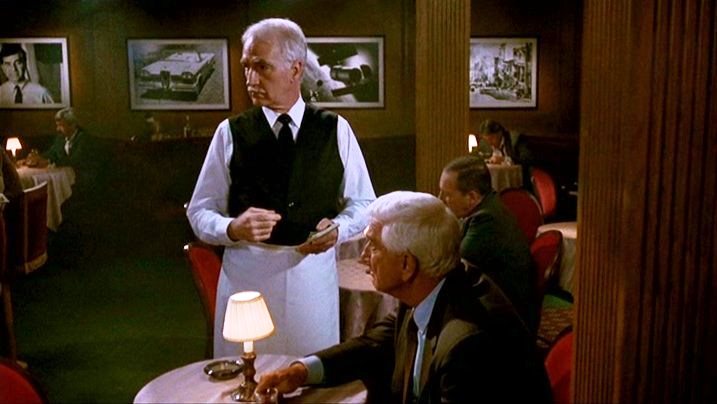But this is a really important client: Difference between revisions
Amwelladmin (talk | contribs) No edit summary |
Amwelladmin (talk | contribs) No edit summary |
||
| Line 7: | Line 7: | ||
There is no economy of scale when it comes to risk management, folks. It is a ''dis''economy of scale. The risk is [[convex]]. In a bad way. It might be a risk you were prepared to take, in small size, among a diverse and de-correlated group of small clients — and even then it is amazing how those correlations suddenly invert — but taking it in ''big'' size, against a ''single'' player —is that not the lesson of [[LTCM]], [[Amaranth]] and [[Enron]]? | There is no economy of scale when it comes to risk management, folks. It is a ''dis''economy of scale. The risk is [[convex]]. In a bad way. It might be a risk you were prepared to take, in small size, among a diverse and de-correlated group of small clients — and even then it is amazing how those correlations suddenly invert — but taking it in ''big'' size, against a ''single'' player —is that not the lesson of [[LTCM]], [[Amaranth]] and [[Enron]]? | ||
Yet, the world-weary old codger sits down on a rock and sets down his staff: for this, my friends, is the immutable way of the universe. We may not like it, but we cannot change it. It leads to two conclusions, neither enormously becoming for your [[risk management]] teams. ''Either'' we ''still'' haven’t learned the lessons of [[Enron]], [[Amaranth]] and [[LTCM]], and rely blindly on those [[Black-Scholes]] models that, as we now know, only work until the point where you really wish they were working, ''or'' the sacred protections we carve into those granite [[master trading | Yet, the world-weary old codger sits down on a rock and sets down his staff: for this, my friends, is the immutable way of the universe. We may not like it, but we cannot change it. It leads to two conclusions, neither enormously becoming for your [[risk management]] teams. ''Either'' we ''still'' haven’t learned the lessons of [[Enron]], [[Amaranth]] and [[LTCM]], and rely blindly on those [[Black-Scholes]] models that, as we now know, only work until the point where you really wish they were working, ''or'' the sacred protections we carve into those granite [[master trading agreement]]s carry a lot less real value than we generally care to admit. Is that [[Don’t take a piece of paper to a knife-fight|piece of paper really the weapon you want when World War Three kicks off]]? Is the fraught negotiation some kind of charade; a piece of theatre put on to demonstrate our willing, and keep in perpetual employment entire villages of risk controllers and negotiators — the same ones we seem intent on relocating to Ulan Bator because they’re too expensive? | ||
{{sa}} | {{sa}} | ||
Revision as of 10:39, 19 October 2020
|
Negotiation Anatomy™
|
Of all the preposterous rationales for weakening key protections in your legal docs, this is perhaps the most bizarre: that the client is so big, and is going to generate so much revenue, that it warrants relaxing the firm’s ordinary, prudent, credit and market risk standards to the point of meaninglessness, on the premise that this, and only this, will nudge this wondrous golden goose across the threshold and onto the satin-sheeted double-king.
The firm would not dream of similar indulgence for a small, pissant client doing a handful of vanilla trades.
We hope the logical car-crash this thinking represents is apparent on its face, but let’s say it out loud anyway: Said big golden goose generates said huge sales credits revenues because it trades a lot, and in big size. It takes more risk. A LOT MORE RISK. A client taking big risks poses a risk to its counterparties. Precisely when those big risks go wrong, its counterparties will be making big rewards which, if that big goose has just nose-dived into a hole in the ground, they will not be able to redeem.
There is no economy of scale when it comes to risk management, folks. It is a diseconomy of scale. The risk is convex. In a bad way. It might be a risk you were prepared to take, in small size, among a diverse and de-correlated group of small clients — and even then it is amazing how those correlations suddenly invert — but taking it in big size, against a single player —is that not the lesson of LTCM, Amaranth and Enron?
Yet, the world-weary old codger sits down on a rock and sets down his staff: for this, my friends, is the immutable way of the universe. We may not like it, but we cannot change it. It leads to two conclusions, neither enormously becoming for your risk management teams. Either we still haven’t learned the lessons of Enron, Amaranth and LTCM, and rely blindly on those Black-Scholes models that, as we now know, only work until the point where you really wish they were working, or the sacred protections we carve into those granite master trading agreements carry a lot less real value than we generally care to admit. Is that piece of paper really the weapon you want when World War Three kicks off? Is the fraught negotiation some kind of charade; a piece of theatre put on to demonstrate our willing, and keep in perpetual employment entire villages of risk controllers and negotiators — the same ones we seem intent on relocating to Ulan Bator because they’re too expensive?
